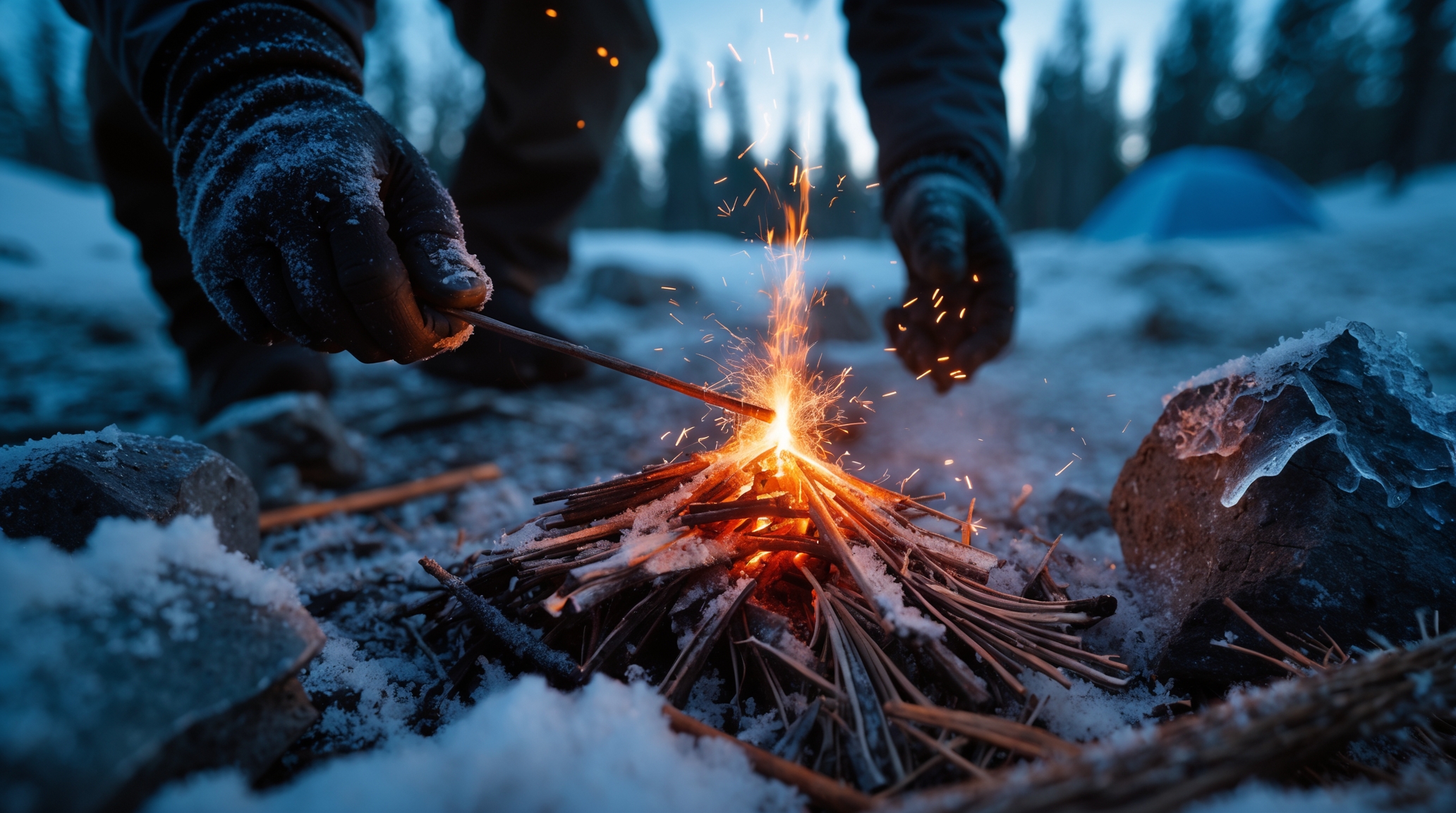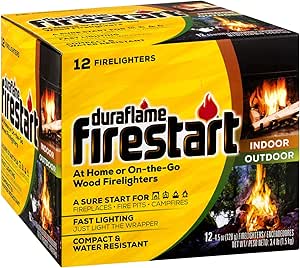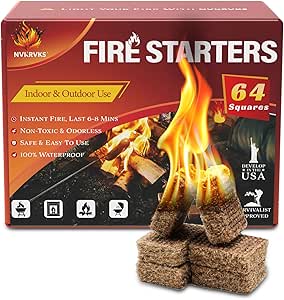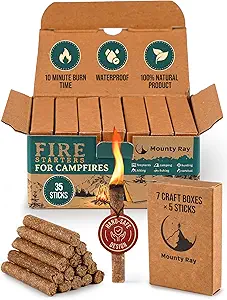Best Fire Starting Techniques for Winter Camping

Best Fire Starting Techniques for Winter Camping
Choosing the Right Materials
Understanding the Importance of Dry Tinder
Dry tinder is the cornerstone of starting a fire, especially in winter when moisture is your biggest enemy. Materials like dry leaves, pine needles, and small twigs can serve as tinder. However, in winter, you may need to rely on carried-in resources like cotton balls dipped in vaseline or commercial fire starters. The key is to use materials that catch fire easily and burn hot enough to ignite larger pieces of kindling.
Finding or Creating Dry Kindling
Once your tinder is lit, kindling is the next step up the fire-building ladder. In snowy conditions, finding dry kindling can be a challenge. Look for dead branches on the lower parts of trees or carry your own in waterproof bags. Suitable materials include:
- Small sticks
- Splinters from larger logs
- Strips of cardboard
The goal is to gradually increase the size of the wood that’s burning without smothering your fledgling flames.
Collecting and Preparing Firewood
The final step in fire preparation is gathering firewood. In winter, this means looking for standing deadwood, which is less likely to be wet than wood on the ground. Use an axe or saw to cut wood into manageable pieces. Remember, wood that’s too large will take too long to catch fire. Splitting wood into smaller pieces exposes more surface area to the flames, helping it to burn more efficiently.
Building an Effective Fire Layout
Transitioning from selecting materials to constructing your fire, let’s explore effective fire layouts.
The Teepee Fire Lay
The teepee layout is ideal for quick lighting and warmth. Start by placing your tinder in the center and then building a teepee of kindling around it. As the kindling catches, add progressively larger pieces of wood, maintaining the teepee shape. This structure allows air to circulate freely, feeding the fire and encouraging stronger flames.
The Log Cabin Fire Lay
For a longer-lasting fire, the log cabin layout might be more suitable. Begin with a tinder nest, then place two pieces of kindling parallel to each other on opposite sides of the tinder. Continue adding kindling in alternating layers, building up in a square shape. This method creates a stable structure that burns more slowly, making it perfect for cooking or providing prolonged heat.
The Lean-to Fire Lay
The lean-to is a simple yet effective layout for windy conditions. Place a long piece of kindling into the ground at an angle over your tinder, creating a shelter from the wind. Lean smaller pieces of kindling against the longer piece, and light the tinder. This layout protects the initial flames from being extinguished and allows the fire to grow despite the wind.
The Science of Fire
Understanding the basics of combustion is crucial for effective fire starting.
Understanding Combustion
Fire is a chemical reaction between oxygen in the air and some sort of fuel (wood, for example). For combustion to occur, you need the three components of the fire triangle: heat, fuel, and oxygen. Understanding this concept is essential for effective fire starting, as it guides the choice of materials and fire layouts.
Managing Heat
The heat source for starting your fire could be a match, lighter, or even a spark from a flint. It’s important to protect this initial heat, nurturing it with tinder until it’s strong enough to ignite kindling. In winter, your body heat can also be a valuable asset. Techniques to protect the initial heat include:
- Cupping your hands around the flame
- Using a small piece of metal to reflect heat back onto the fire
Encouraging Airflow
Proper airflow is crucial for a fire to burn. The layouts mentioned earlier are designed to facilitate airflow. You can also blow gently on the base of the fire to provide additional oxygen. However, balance is key, as too much air can extinguish the flames.
Maximizing Fire Efficiency in Extreme Cold
In extreme cold, maximizing the warmth from your fire is essential.
Using Reflectors to Enhance Warmth
One way to maximize the heat output towards you is by using a reflector. Positioning a large flat rock or setting up a makeshift wall of logs behind the fire can reflect heat back towards your campsite or shelter. This method increases warmth and can help in drying wet clothing or gear more efficiently.
The Importance of Wind Direction
When setting up your fire, always take into account the wind direction. A fire facing the wind can quickly become a firestorm. Conversely, a fire that’s set with its back to the wind, shielded by natural landscapes or your reflector, will burn more steadily and provide consistent warmth.
Fire Maintenance
Keeping a fire going in winter conditions requires continuous effort. Tips for fire maintenance include:
- Regularly adding small amounts of kindling
- Managing the ash build-up to maintain airflow
A well-maintained fire is not only safer but also more efficient at providing warmth.
Winter Fire Safety
Safety is paramount, especially when dealing with fire in a winter camping scenario.
Establishing a Safe Perimeter
Establishing a clear perimeter around your fire prevents accidental spread. Using rocks or digging a shallow pit can help define this boundary and contain the fire’s footprint.
Dealing with Emergencies
Always have a plan for extinguishing the fire quickly if needed. Keeping snow or water nearby can be a lifesaver in emergencies. Additionally, be aware of your environment and any changes in wind direction or intensity that could escalate a fire situation.
Respect Nature and Leave No Trace
Conserving the wilderness should be a part of every camper’s ethic. Practices to minimize your fire’s impact include:
- Using existing fire rings or pits
- Keeping fires small
- Ensuring they are completely extinguished before leaving
The principle of leaving no trace ensures that the natural beauty and integrity of the wilderness remain for others to enjoy.
Wrapping Up With Pro Tips
Finally, let’s conclude with some pro tips for managing a fire in winter.
Utilizing Snow for Fire Benefits
Interestingly, snow can be both a challenge and an asset when managing a fire in winter. Packing snow around the perimeter of your fire pit can create a solid barrier that helps contain the fire and reflect heat. Additionally, melting snow provides a readily available water source for extinguishing the fire.
The Art of Layering
Just as layering your clothing is vital for staying warm, layering your fire-starting materials-tinder, then kindling, followed by progressively larger wood-ensures a steady burn. This method facilitates easier management, allowing you to control the fire’s intensity and longevity.
Compare Products
Use the arrows to choose products to compare.
| Feature / Product | duraflame Firestart | Nvkrvks Fire | MAQIHAN Fire | Magnesium Fire | 35 Fire |
|---|---|---|---|---|---|
 |
 |
 |
 |
 |
|
| $59.82 | $44.54 | $5.29 | $10.68 | $19.85 | |
| Shop now → | Shop now → | Shop now → | Shop now → | Shop now → | |
| Specifications | |||||
| Brand | duraflame | Nvkrvks | MAQIHAN | HOPKASE | Mounty Ray |
| Weight | 3.4 Pounds | 0.3 Kilograms | 2.08 ounces | 3.54 Ounces | 8.4 ounces |
| Dimensions | N/A | N/A | 5.12 x 3.46 x 0.47 inches | 4.4 x 1.6 x 0.62 inches | 4.76 x 3.27 x 2.32 inches |
| Material | Wax | Wood Fiber & Paraffin Wax | Cotton | Cerium, Lanthanum, Magnesium, Zinc | Food Grade Paraffin Wax, Wood |
| Capacity | N/A | N/A | N/A | N/A | N/A |
| Efficiency | N/A | N/A | N/A | N/A | N/A |
| Waterproof | N/A | Yes | Yes | Yes | Yes |
